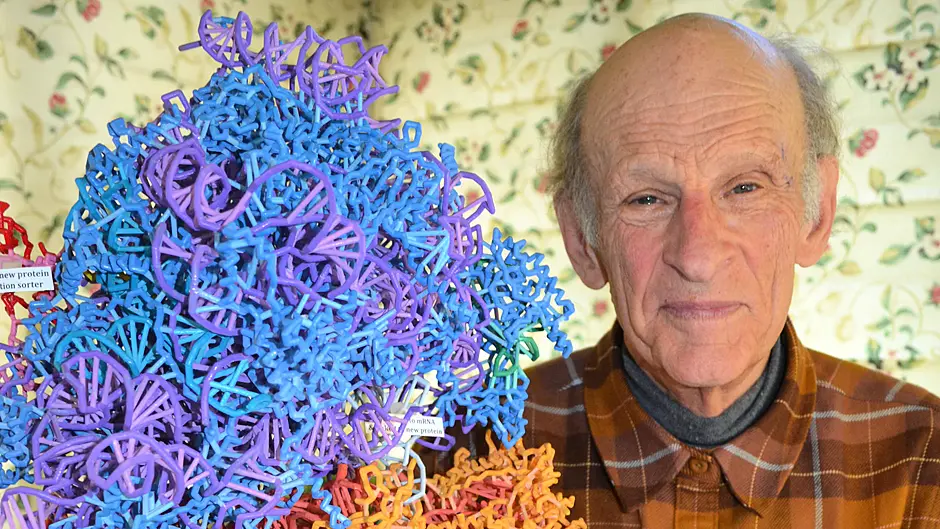Human curiosity has resulted in many significant medical advances. Wonder can lead to important discoveries around the world – even here in West Cork, as Mary McCarthy reports
In 1971, a young man entered Ballineen Post Office, to post a letter to America, which would be significant in diverting him from a business career in Co Cork. Dunmanway man, Prof John Atkins, a research professor, later worked in America for 30 years.
After 59 years of research, he is currently finishing at UCC.
‘The kindly lady behind the counter had no idea the letter contained important findings, with a draft manuscript on an aspect of “readout of hereditary information to yield proteins that are critical for all life”. I remember asking her for a stamp for the package. She waved the envelope in her hand. ‘My hand is more accurate than the scales,’ she said, looking down at the bulk flour scales. ‘Tell me, if is it important?’ she said. ‘Ma’am,’ I said, ‘Tis.’ ‘We’ll put two stamps on it so,’ she added.
If you watch a David Attenborough film, it depicts a marvellous diversity of life. But there is also a corresponding variety at the subcellular level that permits human ingenuity and visible changes in nature. DNA (deoxyribonucleic acid), RNA (ribonucleic acid), and proteins perform critical roles in this.
In late April, apart from the beauty of the northern hemisphere, consider the reactions involved in the burst of leaves that appear on trees. There is a massive biochemical transformation occurring behind this.
‘Chance can favour the “rash,” or, at least, it leads to decisive action,’ John said. ‘At the beginning of 1962, after hearing a lecture in Trinity College on how English physicist Frances Crick and colleagues had just determined the general nature of readout of the genetic code, I decided to switch to study science and graduate in genetics. I was the only student of genetics in Ireland that year.’
The meaning of some words depends on the meaning of other words in the sentence in which they occur. A counterpart occurs in ‘readout of hereditary information’. Such readout can have another form of diversity due to ‘frameshifting’ since its words are normally read sequentially in a frame of three letters, without spacing, unlike the written sentences of European-based languages.
 The code on the ribosome decoding apparatus.
The code on the ribosome decoding apparatus.
John’s work played a major role in identifying where these non-standard readout events occur, their natural function, and the mechanisms by which they occur. They are prevalent in decoding viral DNA or viral RNA, including those which cause Covid, Aids, influenza, and many plant diseases. Though these non-standard events are rarely used in human decoding, and in organisms such as bacteria, several are important.
In Brinny, near Innishannon, Schering Plough was among the first in the world to commercially use recombinant DNA. It produced Interferon. The Interferon produced in viral infections and several forms of cancers, results in fragments of protein being produced by exceptional decoding. These are displayed for an immune response.
Covid vaccines, based on modified mRNA, drew attention to the form of RNA that serves as the genetic tape whose information is decoded to yield proteins. In addition to RNA being informational, one of the other properties of some forms means RNA may have been more ancient than DNA.
In the National Botanical Gardens in Dublin, these RNAs, along with two others, and DNA, are represented in an aluminium sculpture called ‘What is Life?’
John co-commissioned that sculpture and co-designed its RNA component, 10 years after he finished being director of life sciences/biotechnology in Science Foundation Ireland. Dr Jim Watson and a government minister opened the structure to the public on the 60th anniversary of the discovery of the structure of DNA.
John co-edited all five editions of The RNA World’s books that have highlighted the properties of RNA. These include 24 chapters by Nobel Prize laureates.
The function of many RNAs remains unknown; along with outstanding mysteries of the fundamental basis of life. Many exciting challenges remain. There are opportunities for at least 40 or 50 years for scientists and engineers.
At the same time, advances in synthetic use of biological ‘tricks’ and interacting ‘partners,’ will become increasingly significant. Both have broad implications, including for disease research, food production, climate conditions, and forensics.
In 1953, the newspapers highlighted the coronation of Queen Elizabeth II and how Mount Everest was conquered. However, the discovery of the structure of DNA went publicly unnoticed. Yet, DNA and RNA have had, and will continue to have, major significance in every one of our lives.










